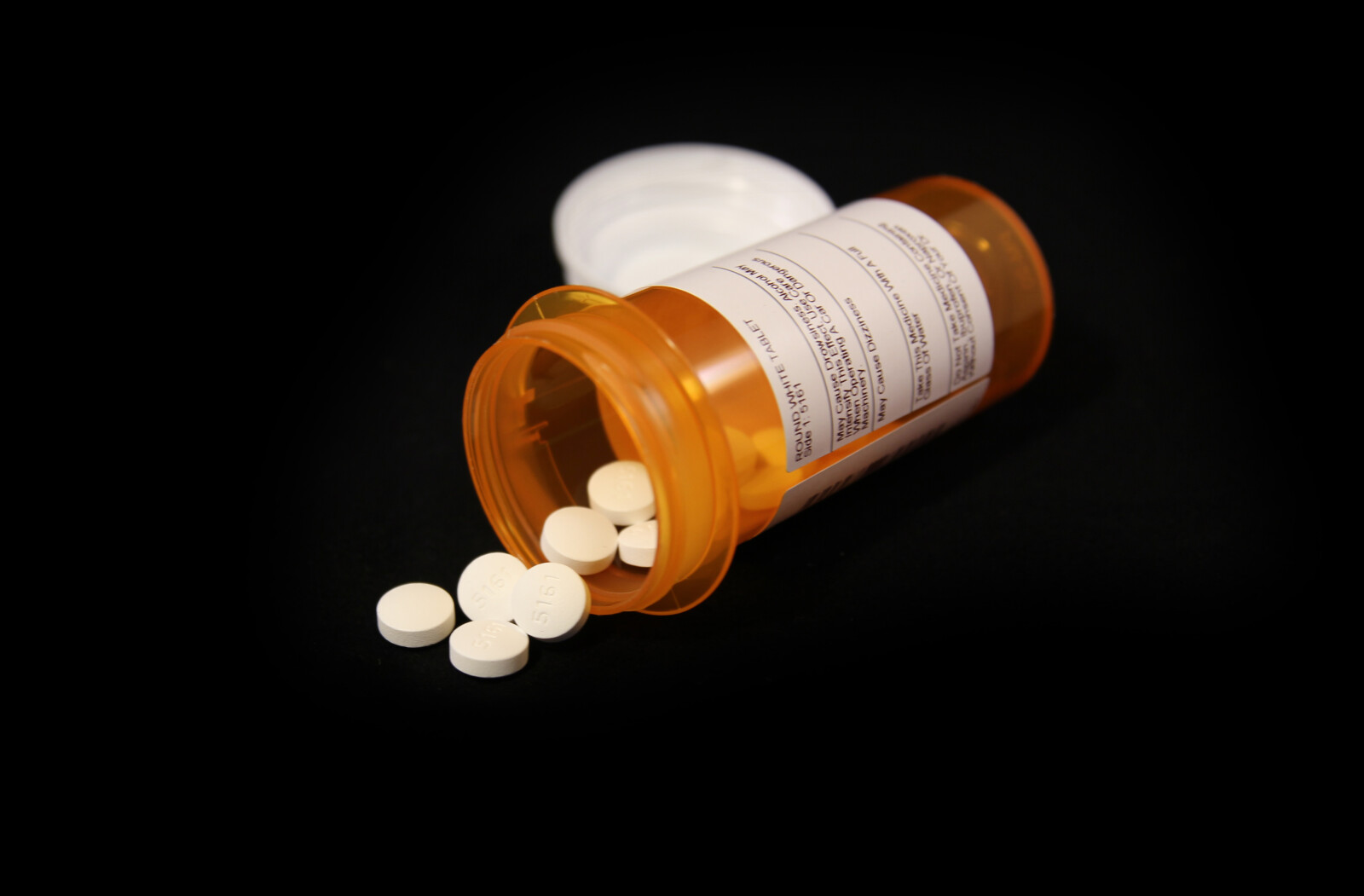SGLT2 Inhibitors Side Effects
In the struggle to manage type 2 diabetes, SGLT2 inhibitors like Invokana and Farxiga offer hope. However, their use has also sparked concerns due to a range of potential side effects, from minor issues to severe complications like kidney injuries. Our comprehensive examination of SGLT2 inhibitors aims to shed light on these side effects, enhancing understanding, and promoting informed decisions in diabetes management.

Key Takeaways
- SGLT2 inhibitors can cause common side effects such as vaginal yeast infections, yeast infections of the penis, stuffy or runny nose, changes in urination, and dyslipidemia.
- Serious side effects of SGLT2 inhibitors include diabetic ketoacidosis, fungal infections, kidney injuries, necrotizing fasciitis of the perineum (Fourniers gangrene), and an increased risk of bladder cancer (specifically with Farxiga).
- The overall safety profile of SGLT2 inhibitors is generally good, but rare serious side effects can still lead to severe complications such as amputation, ketoacidosis, and Fourniers gangrene.
- SGLT2 inhibitors may increase the risk of genital infections, particularly yeast infections in women and men. Women prone to infections and uncircumcised men are at an increased risk. The FDA has issued a warning about Fourniers gangrene, a rare but serious genital infection.
Understanding Common Side Effects of SGLT2 Inhibitors
While SGLT2 inhibitors are generally considered safe, it is essential to understand that they can cause common side effects such as vaginal yeast infections, yeast infections of the penis, changes in urination, and dyslipidemia. Exploring the impact on glucose control, these drugs function to lower blood sugar levels by blocking the reabsorption of glucose in the kidneys. This results in increased glucose excretion through urine, which can potentially lead to changes in urination patterns and increased risk of genitourinary infections. Furthermore, examining the potential for drug interactions, SGLT2 inhibitors may interact with diuretics and antihypertensive drugs, impacting fluid balance and blood pressure control. Healthcare providers should carefully consider these side effects and potential interactions when prescribing SGLT2 inhibitors.
Exploring Serious Side Effects of SGLT2 Inhibitors
Delving into the realm of serious side effects, SGLT2 inhibitors may lead to potentially life-threatening conditions such as diabetic ketoacidosis and kidney injuries, and they have also been associated with an increased risk of bladder cancer, particularly with the use of Farxiga. In exploring long term effects of SGLT2 inhibitors, the focus has been on unmasking the full spectrum of these side effects. Some may emerge only after prolonged use, underscoring the need for ongoing monitoring of patients. Evaluating the effectiveness of risk mitigation strategies is also crucial. This includes patient education about early symptom recognition, regular kidney function testing, and immediate discontinuation of the drug if serious side effects occur. The balance between the benefits and risks of SGLT2 inhibitors remains a topic of ongoing research and debate.
Analyzing the Safety Profile of SGLT2 Inhibitors
In light of the potential risks associated with SGLT2 inhibitors, a comprehensive analysis of their safety profile is of paramount importance in guiding clinical decisions and patient management. Understanding the long-term safety of SGLT2 inhibitors requires a careful examination of reported side effects, with a focus on severe complications such as ketoacidosis, kidney injury, and increased risk of amputations. Monitoring guidelines for SGLT2 inhibitors, including regular renal function tests and patient education about potential side effects, are crucial in optimizing patient safety. While these drugs offer significant benefits in managing blood glucose levels in individuals with type 2 diabetes, the potential risks necessitate a patient-centered approach that balances these benefits against the potential for serious adverse events.
SGLT2 Inhibitors and Genital Infections: A Closer Look
Approximately one in ten patients using SGLT2 inhibitors may experience genital infections, necessitating a detailed examination of this side effect. The impact of SGLT2 inhibitors on sexual health can be significant, as these infections often result in discomfort and require treatment, potentially affecting the individuals' quality of life. The infections are typically fungal in nature, caused by the increased glucose concentration in the genital area, providing an ideal environment for yeast growth. Additionally, a potential link between SGLT2 inhibitors and urinary tract infections has been observed. While the mechanism behind this is not fully understood, it is thought that the increased glucose in the urine may also promote bacterial growth. Therefore, patients using these medications should be closely monitored for signs of these infections.
Reporting Adverse Events: A Vital Step
Prompt and accurate reporting of adverse events related to SGLT2 inhibitors is a critical step in ensuring patient safety and improving drug effectiveness. The FDA has issued warnings regarding ketoacidosis and serious urinary tract infections (UTIs) associated with these drugs. Such adverse events should be promptly reported to aid in continuous assessment and monitoring of the drug's safety profile. Similarly, evidence has suggested an increased bladder cancer risk with the use of Farxiga, an SGLT2 inhibitor. Although the causal relationship is not definitively established, the FDA has received several reports of bladder cancer cases associated with its use. Reporting these instances is crucial in further scientific investigation and potentially updating the drug's safety information to protect future patients.
Ketoacidosis and Urinary Tract Infections: A Dangerous Combination
While SGLT2 inhibitors are generally considered safe, it becomes a cause for concern when patients develop both ketoacidosis and urinary tract infections, as this combination can lead to severe complications. The risk of life threatening complications from urinary tract infections increases dramatically when coupled with ketoacidosis. The potential link between ketoacidosis and SGLT2 inhibitors is a growing area of study. Research indicates that patients using SGLT2 inhibitors may have a higher risk of developing ketoacidosis, a serious condition in which the body produces high levels of blood acids called ketones. Furthermore, urinary tract infections can exacerbate the symptoms of ketoacidosis, potentially leading to serious health consequences. Therefore, it is imperative that physicians monitor patients closely for signs of these conditions.
Farxiga and Bladder Cancer: Is There a Connection
Farxiga, a commonly prescribed SGLT2 inhibitor, has been linked to a potential increase in the risk of bladder cancer, and this connection is the focus of ongoing research and debate in the medical community. Studies have indicated a possible correlation between long term effects of Farxiga use and elevated bladder cancer risk in diabetic patients. Though a definitive causal relationship has not been established, the association warrants careful monitoring of Farxiga users with a history of bladder cancer. It is crucial to note that bladder cancer is multifactorial and other risk factors such as age, smoking, and exposure to certain chemicals also play significant roles. As research progresses, clinicians are urged to exercise caution and individualize treatment decisions based on patient-specific risk factors.
Invokana Amputations: A Critical Concern
Although Invokana is an effective drug for managing blood sugar levels in type 2 diabetes, it has been associated with an increased risk of lower limb amputations, making this side effect a critical concern for healthcare professionals and patients alike. Invokana amputations can have long term effects on quality of life, mobility, and overall health. Studies have shown a higher rate of amputations among Invokana users compared to other SGLT2 inhibitors. This has led to a re-evaluation of the cardiovascular benefits of this class of drugs. While SGLT2 inhibitors have proven beneficial for cardiovascular health in many patients, the potential risk of amputation with Invokana use necessitates careful consideration and vigilant monitoring in the clinical management of type 2 diabetes.
Kidney Injuries: a Potential Risk With SGLT2 Inhibitors
The use of SGLT2 inhibitors presents many potential benefits in the management of type 2 diabetes, but it also carries a potential risk of kidney injuries, necessitating careful monitoring and patient education. The potential link between these inhibitors and kidney injuries has been highlighted in numerous clinical reports. Patients may experience symptoms such as decreased urine output and swelling in the legs and feet. In some cases, kidney injury has required hospitalization and dialysis. It is crucial to note that these incidents have occurred within one month of the medication's initiation. The long term effects of such injuries are still under investigation, reinforcing the need for ongoing patient monitoring and research to fully understand this risk.
General Safety Information Every User Should Know
In managing type 2 diabetes with SGLT2 inhibitors, there are several crucial safety considerations that every user should be aware of to ensure optimal treatment outcomes. It's important to investigate the association between SGLT2 inhibitors and cardiovascular events. Studies continue to evaluate the long-term safety profile of these drugs, as well as their potential risks. Users should monitor for signs of genital infections and urinary tract issues, as these are common side effects. Serious side effects, although rare, can include diabetic ketoacidosis and kidney injuries. It's also essential to note that individual drugs within the SGLT2 inhibitor class may carry their unique risks, such as bladder cancer with Farxiga or increased amputation risk with Invokana. Therefore, patient-specific factors should guide the choice of therapy.
Understanding the Risk of Yeast Infections
Given that SGLT2 inhibitors can increase glucose concentration in the genital area, it is not surprising that users of these medications may be at a higher risk of developing yeast infections. Fungal infections and SGLT2 inhibitors have been associated due to this heightened glucose concentration, which can create an environment conducive to yeast growth. Potential risks of genital infections with SGLT2 inhibitors are significantly higher, especially in females and uncircumcised males. These yeast infections, while typically treatable, can cause discomfort and require medical attention. It is essential for patients on SGLT2 inhibitors to be aware of this risk, to monitor for symptoms of infection, and to seek immediate medical attention if signs of a yeast infection occur.
The Connection Between SGLT2 Inhibitors and Fournier’s Gangrene
Drawing upon recent scientific studies, we can begin to piece together a concerning connection between the use of SGLT2 inhibitors and the development of Fournier's Gangrene, a rare but serious bacterial infection. This potential complication is thought to arise from the increased susceptibility to infection, which SGLT2 inhibitors may induce. Fournier's gangrene rapidly progresses and frequently requires aggressive surgical intervention, alongside potent antibiotic therapy. It is essential that patients and healthcare professionals are aware of this risk to facilitate early detection and initiation of treatment options for Fournier's gangrene. The overall management also includes vigilant blood glucose control and regular medical reviews. This underscores the need for a balanced approach between the benefits and potential risks of SGLT2 inhibitors.
How SGLT2 Inhibitors Influence Urination Patterns
The influence of SGLT2 inhibitors on urination patterns is a significant aspect of their side effect profile, and it is associated with both therapeutic benefits and potential complications. These medications increase glucose excretion through the urine, impacting urinary frequency and potentially leading to nocturia. Patients taking SGLT2 inhibitors may notice an increase in both daytime and nighttime urination. Nocturia, or nighttime urination, can disturb sleep patterns and impact quality of life. Increased urinary frequency may also lead to dehydration if fluid intake is not adequately increased. While these side effects can be managed with lifestyle modifications, they can be burdensome and inconvenient, potentially affecting adherence to medication. It is crucial for healthcare providers to discuss these potential side effects with patients before initiating therapy with SGLT2 inhibitors.
A Look at the Risk of Increased Cholesterol Levels
Incorporating SGLT2 inhibitors into a diabetes management regimen, one must be cognizant of the potential for increased cholesterol levels, a side effect that could have significant implications for cardiovascular health. Exploring the link between increased cholesterol levels and SGLT2 inhibitors, it's been observed that these medications may lead to a slight rise in LDL cholesterol, commonly referred to as "bad cholesterol". This is due to the increased reabsorption of glucose and consequential increase in lipid concentration. Analyzing the potential impact of SGLT2 inhibitors on lipid profiles, it becomes evident that while they provide significant benefits in glucose control, their effect on cholesterol may require additional monitoring and potential co-therapy to manage elevated cholesterol levels and mitigate cardiovascular risk.
The Relationship Between SGLT2 Inhibitors and Dyslipidemia
Several studies have demonstrated a complex relationship between the use of SGLT2 inhibitors and the onset of dyslipidemia, a condition characterized by abnormal amounts of lipids in the blood. The impact of SGLT2 inhibitors on lipid levels is still under investigation, but some findings suggest that these inhibitors may cause a slight increase in LDL cholesterol and a modest elevation in HDL cholesterol. However, the clinical significance of these changes remains unclear. Furthermore, research is also exploring the potential link between SGLT2 inhibitors and cardiovascular outcomes. While some studies have reported a decreased risk of major adverse cardiovascular events, others have not found a significant association. Therefore, more detailed and extensive studies are needed to fully understand this complex interplay.
Frequently Asked Questions
How Does the Effectiveness of SGLT2 Inhibitors Compare to Other Diabetes Medications?
SGLT2 inhibitors have proven to be effective in managing diabetes, with additional benefits such as weight loss and blood pressure reduction. However, the cost can be significantly higher compared to other diabetes medications. In terms of administration, SGLT2 inhibitors are conveniently taken orally once daily. Comparatively, their effectiveness may depend on individual patient factors, making it crucial to consider costs, administration ease, and patient preferences in choosing the best treatment option.
Can Lifestyle Modifications Reduce the Side Effects Associated With SGLT2 Inhibitors?
Lifestyle modifications, particularly dietary adjustments and regular exercise, can indeed mitigate the side effects associated with SGLT2 inhibitors. A balanced diet can aid in managing blood sugar levels and potentially reduce the risk of urinary tract and yeast infections. Regular exercise, on the other hand, can improve overall health and reduce the risk of cardiovascular side effects. However, it is crucial to consult with a healthcare professional for personalized advice.
Are There Any Groups of People for Whom SGLT2 Inhibitors Are Not Recommended?
SGLT2 inhibitors may not be recommended for certain groups of individuals based on their risk factors and patient eligibility. These may include people with severe kidney impairment, active bladder cancer, or a history of diabetic ketoacidosis. Pregnant or breastfeeding women should also exercise caution. Each patient's suitability for SGLT2 inhibitors should be evaluated on an individual basis, considering their health status, comorbidities, and potential for side effects.
What Is the Long-Term Impact of Using SGLT2 Inhibitors on a Patient’s Overall Health?
Long-term use of SGLT2 inhibitors can have significant effects on a patient's overall health. Specifically, these drugs may impact kidney function, potentially leading to kidney injury. Additionally, there are potential cardiovascular risks associated with prolonged use. However, they also provide benefits like blood glucose control and weight loss, which can improve cardiovascular health. Therefore, the long-term impact is a balance of managing potential risks while maximizing benefits, necessitating ongoing monitoring by healthcare professionals.
How Do SGLT2 Inhibitors Interact With Other Commonly Prescribed Medications for Diabetes?
SGLT2 inhibitors interact with other commonly prescribed diabetes medications in ways that can enhance their overall effectiveness, a phenomenon known as diabetes drug synergy. However, these interactions can also increase the risk of hypoglycemia or other adverse effects. It's critical to monitor patients carefully when combining SGLT2 inhibitors with other diabetes drugs to ensure safe and beneficial outcomes. Individual patient factors and specific medication profiles should guide therapeutic decisions.
Conclusion
In conclusion, the journey of using SGLT2 inhibitors is akin to traversing a narrow mountain path: it can lead to the peak of improved health but also holds potential for perilous side effects. Striking a delicate balance between benefits and risks is crucial. Continuous monitoring, diligent reporting of adverse events, and a comprehensive understanding of these medications can help ensure a safer and more effective usage, offering diabetes patients a more secure journey towards healthier lives.

This post has been generated by AI and was not reviewed by editors. This is Not legal advice. Please consult with an attorney.




